The founders of the USE unused brand, which ceased in 2017, donated the remaining pieces of their joint graduation collection to the Museum of Applied Arts’ Contemporary Design Collection in 2019: three evening dresses, five long and seven short coats.1 In the context of the donation, the designers talked about their 2004 graduation project, which featured the USE unused logo for the first time.2 Using these interviews, this text aims to explain the origins of the brand and the concept of the diploma work through the garments in the collection. The analysis of the garments was based on a condition survey written by the restorers of the Textile and Costume Collection and a former intern of the Contemporary Design Department.3
Author: Rita Komporday
In 2002, the Finnish textile company Lindström announced a workwear competition in Helsinki for European design teams, in which Eszter Füzes, Attila Godena-Juhász and András Tóth participated together. The works had to be labeled with a catchword, and they decided to go with the word “use”. Their entry won a special prize and the successful trio applied for the 3rd Cumulus Fashion Tour in London a year later, a competition where, according to the contest notice, you could only enter with white outfits. “We were lucky because we happened to be working on a white knitwear collection that year, which was also selected, [and] it became »unused«”4—recalls Attila Godena-Juhász—for which they won first prize.5 The brand’s name (USE unused) was thus born from the juxtaposition of the two watchwords. The preparation for the competitions and the joint creation brought the students together so much that they decided to create their diploma project together. In 2003, they spent half a year in Paris at the École Duperre, where they started working on their diploma work.6 They sewed a miniature prototype of the collection with the adequate materials and colors on the spot, and after returning home, they attended the evaluation of the diploma project at the Textile Department of the Hungarian University of Arts and Design (now Moholy-Nagy University of Art and Design), where they presented their theme through hand-stitched, doll-sized garments. However, the exam committee didn’t accept their work as they hadn’t prepared fashion drawings for the presentation. It didn’t go well for the mini-collection either, as it disappeared from the college workshop without a trace. Later, for the diploma project showcasing event at the university, in addition to the logoed suits and accessories, the three students also produced fashion photographs and a stop-motion video. Moreover, they organized a fashion show in the Károlyi Garden, which evoked the Parisian atmosphere.7“We set a precedent with all this,” told Eszter Füzes.
Initially, the collection consisted of six long and eight short wool coats, six tulle-like evening dresses and accessories. The connecting element was the circle motif, which “became a dominant cutting pattern element in the whole collection,” explains András Tóth.8 What most concerned the designers during the work was how to create a classic garment with as few geometric cutting patterns as possible. They drew inspiration from the work of renowned haute couture designers such as Cristóbal Balenciaga (1895-1972), Christian Dior (1905-1957), Jacques Fath (1912-1954), André Courrèges (1923-2016) and Hubert de Givenchy (1927-2018).
From the long wool clothing through the sheath dress9 to the trapeze line, all were dominant styles in the second half of the 20th century. The light blue and orange garments echo the tight and clean silhouette of the sheath dress from different eras, which was much favored by Balenciaga and Givenchy.10 And the trapeze line of Yves Saint Laurent’s dress expands from the shoulders downwards, hiding the wearer’s figure.11 This was taken further by the Hungarian students when designing the cutting lines for the yellow, brown and pink coats, where the sleeves gradually disappeared until there was only a single zipped opening for the forearms. Later, the neckline also narrowed until the head was covered, as previously did the Courrège hood. 12
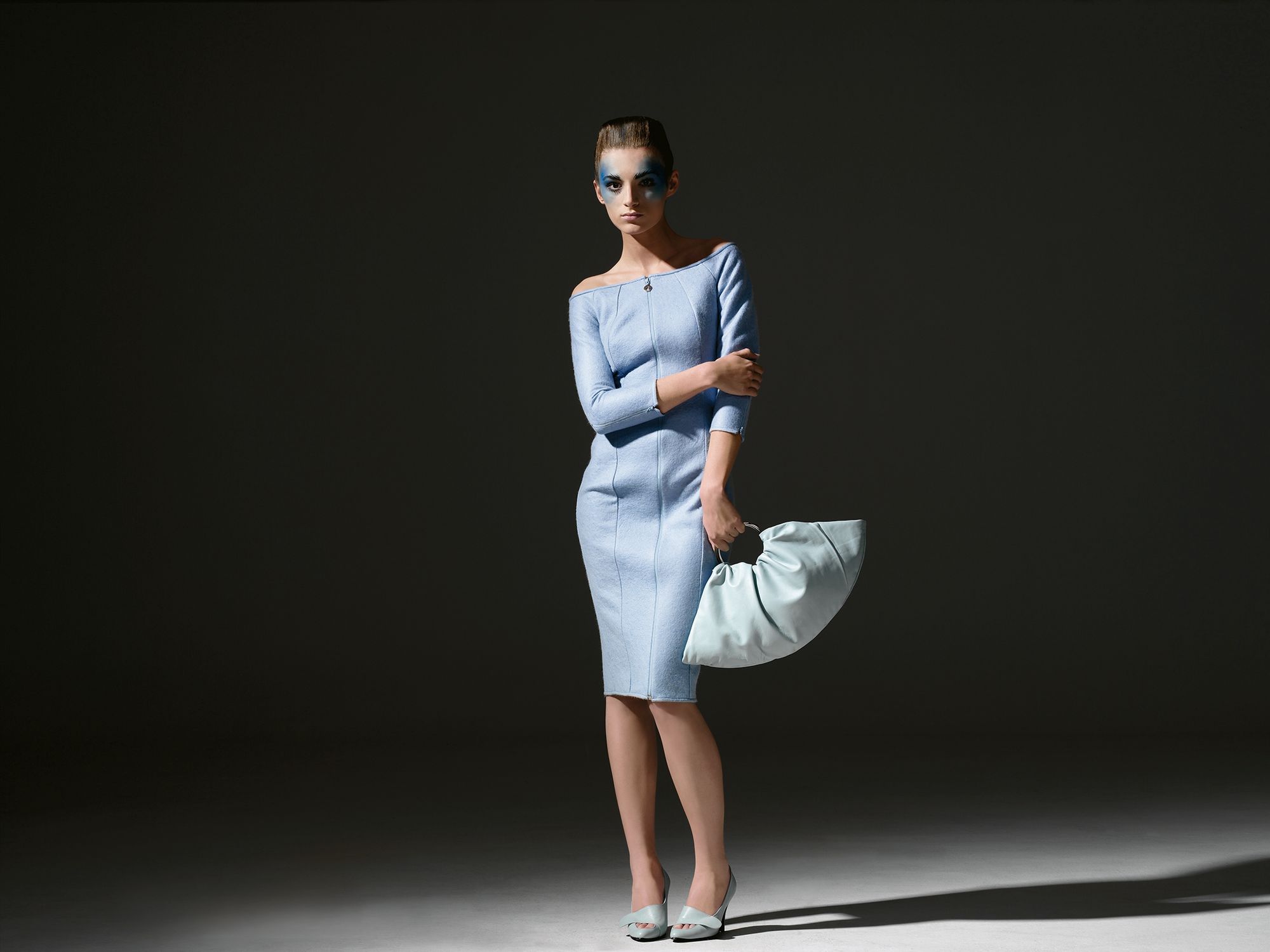
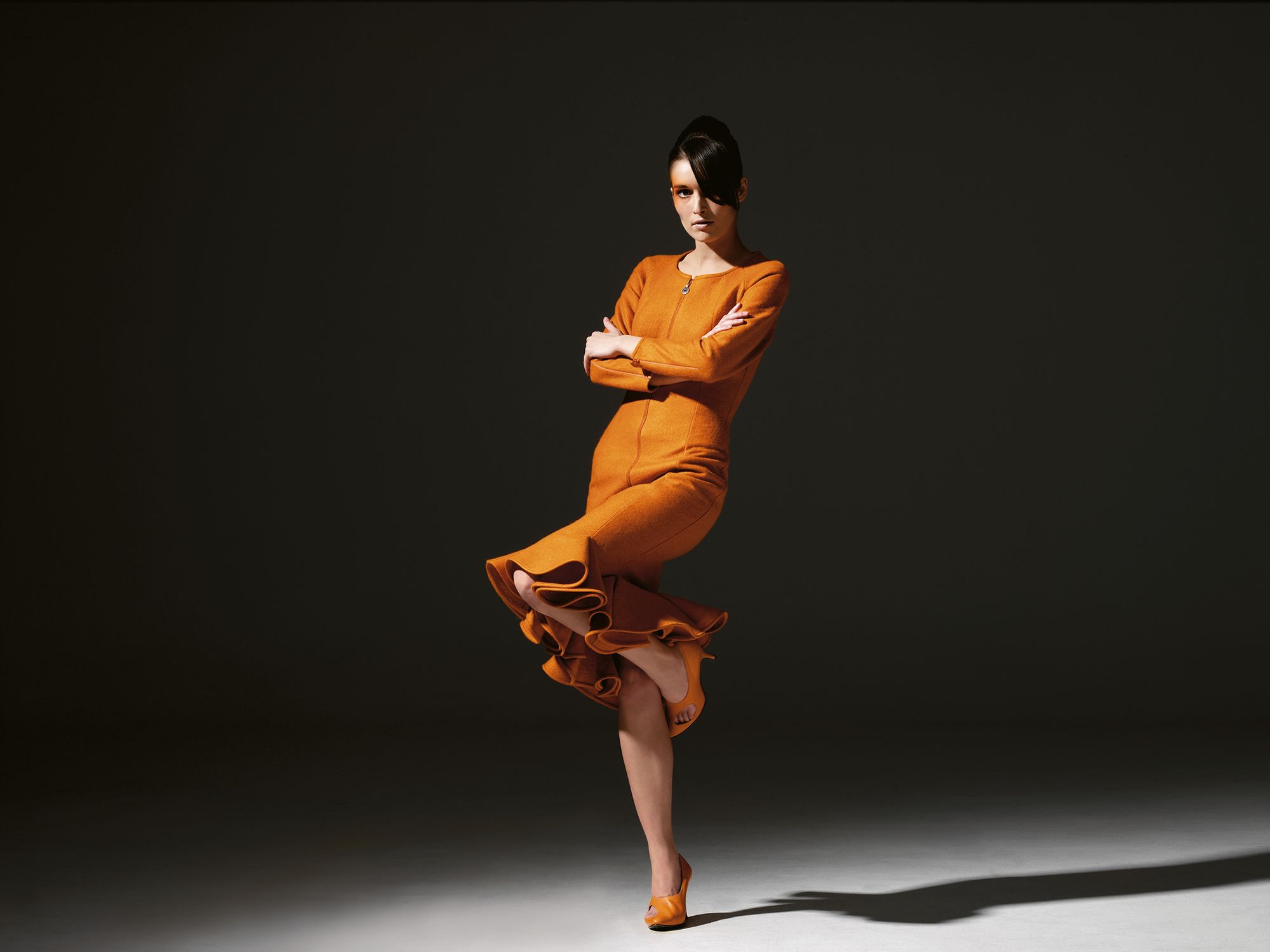
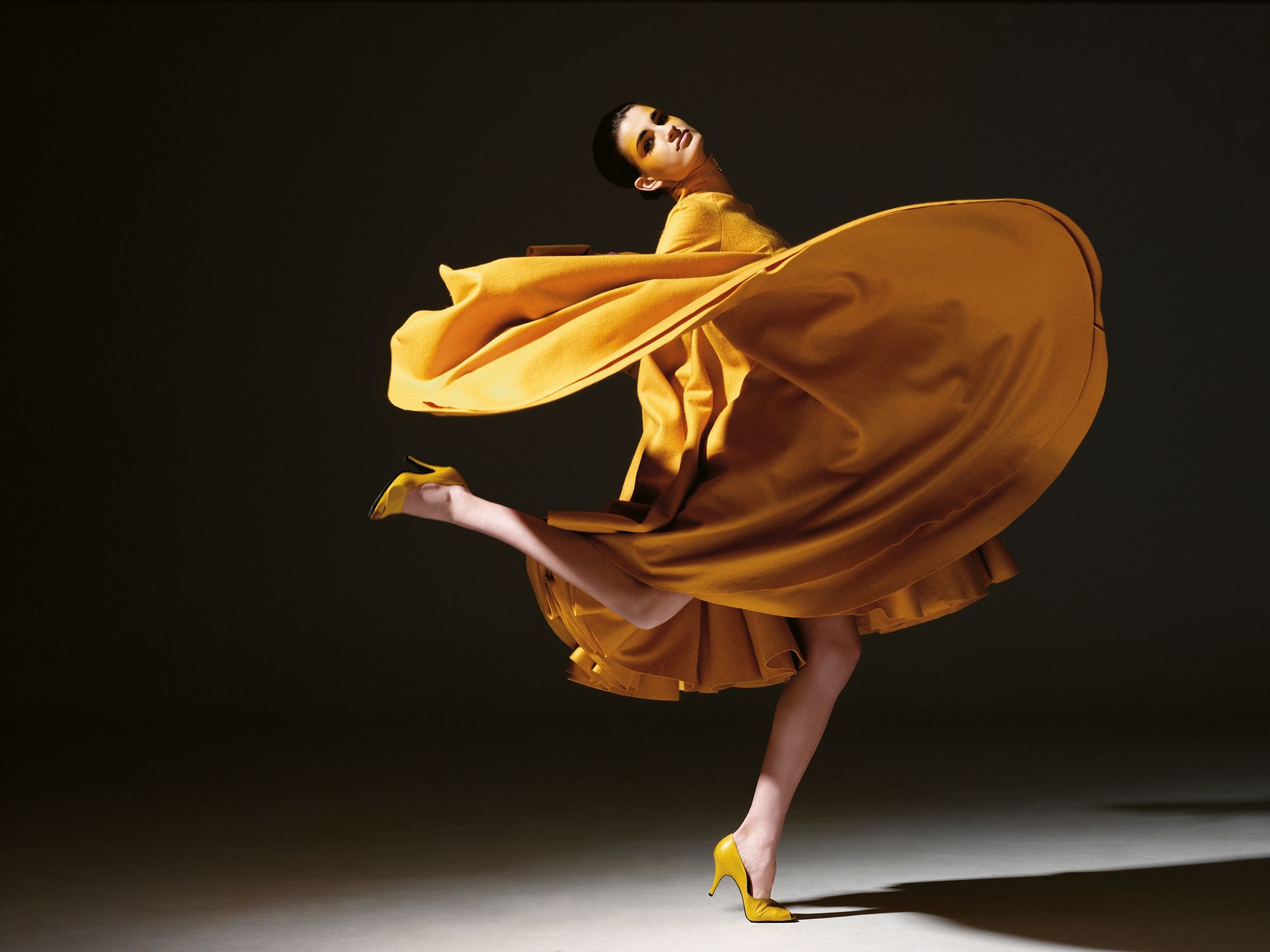

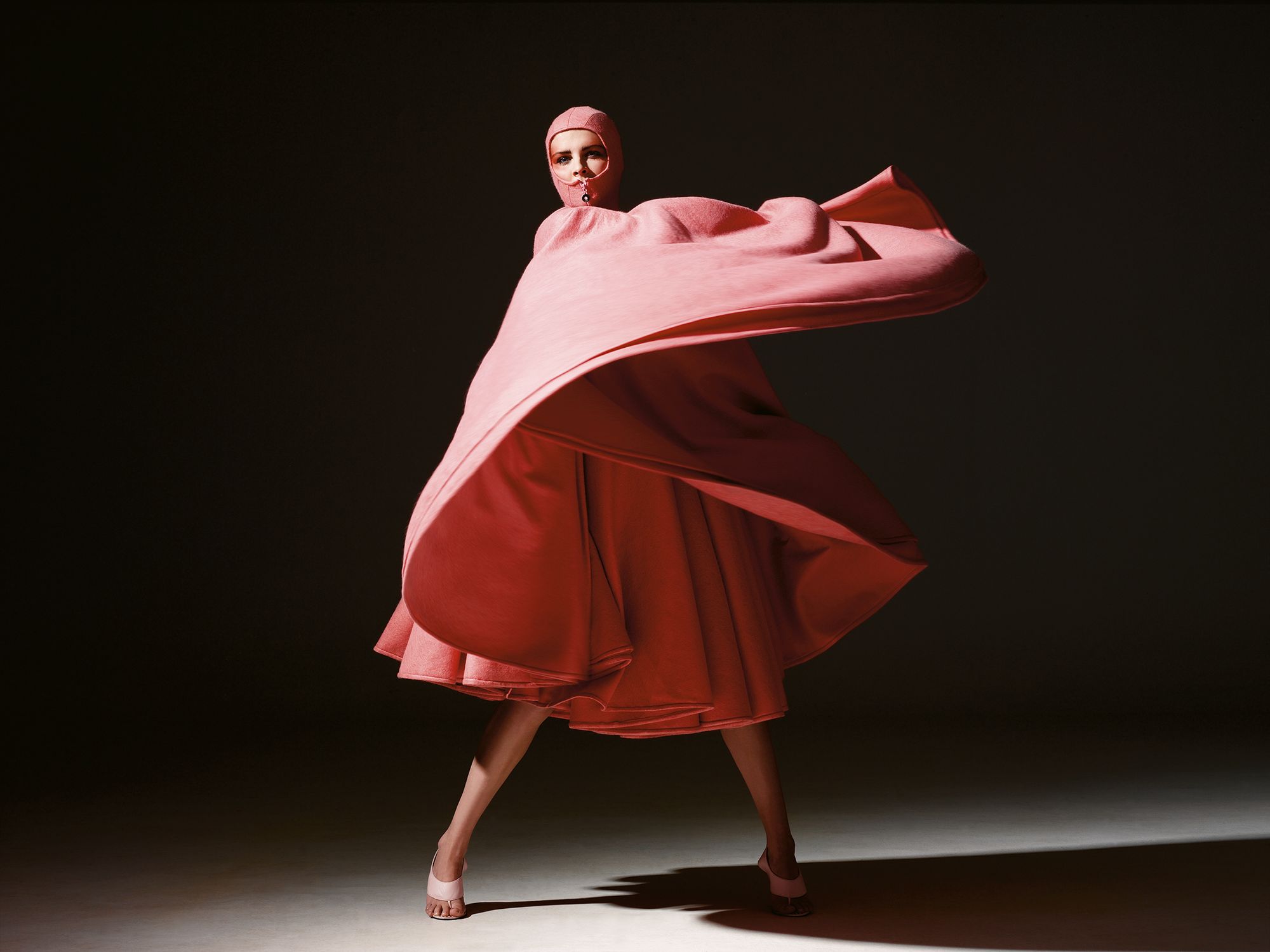
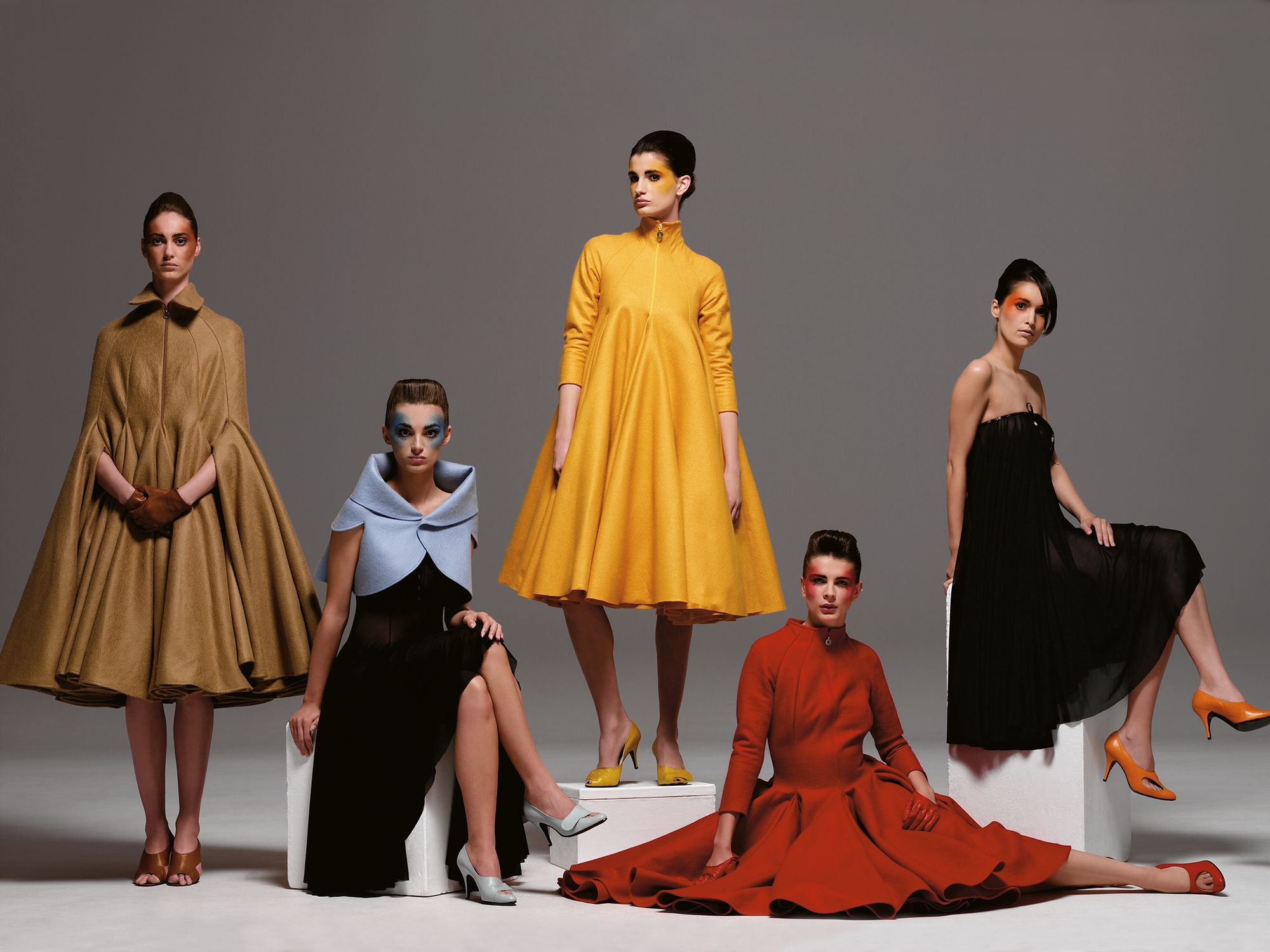
The skirt part of the tulle-like dresses was made up of circular or concentric rings, which were made spectacular and extremely heavy by using large amounts of frills in varying sizes. Fifteen ruffles of different sizes, densely stacked on top of each other, adorn the scalloped, halter neck dress, a reflection of a 1961 Balenciaga lace evening dress for which the Spanish designer drew inspiration from the costumes worn by flamenco dancers.13

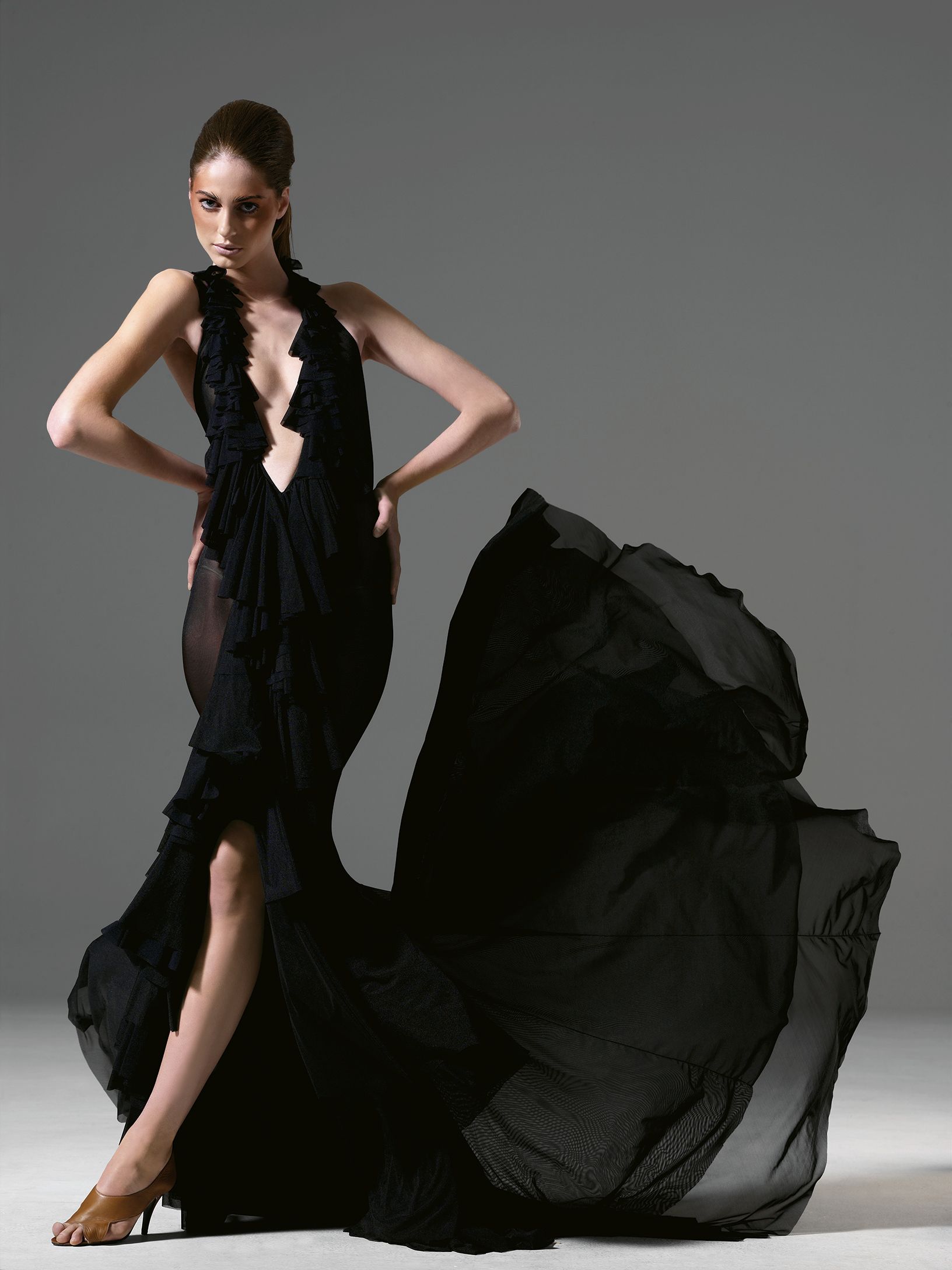
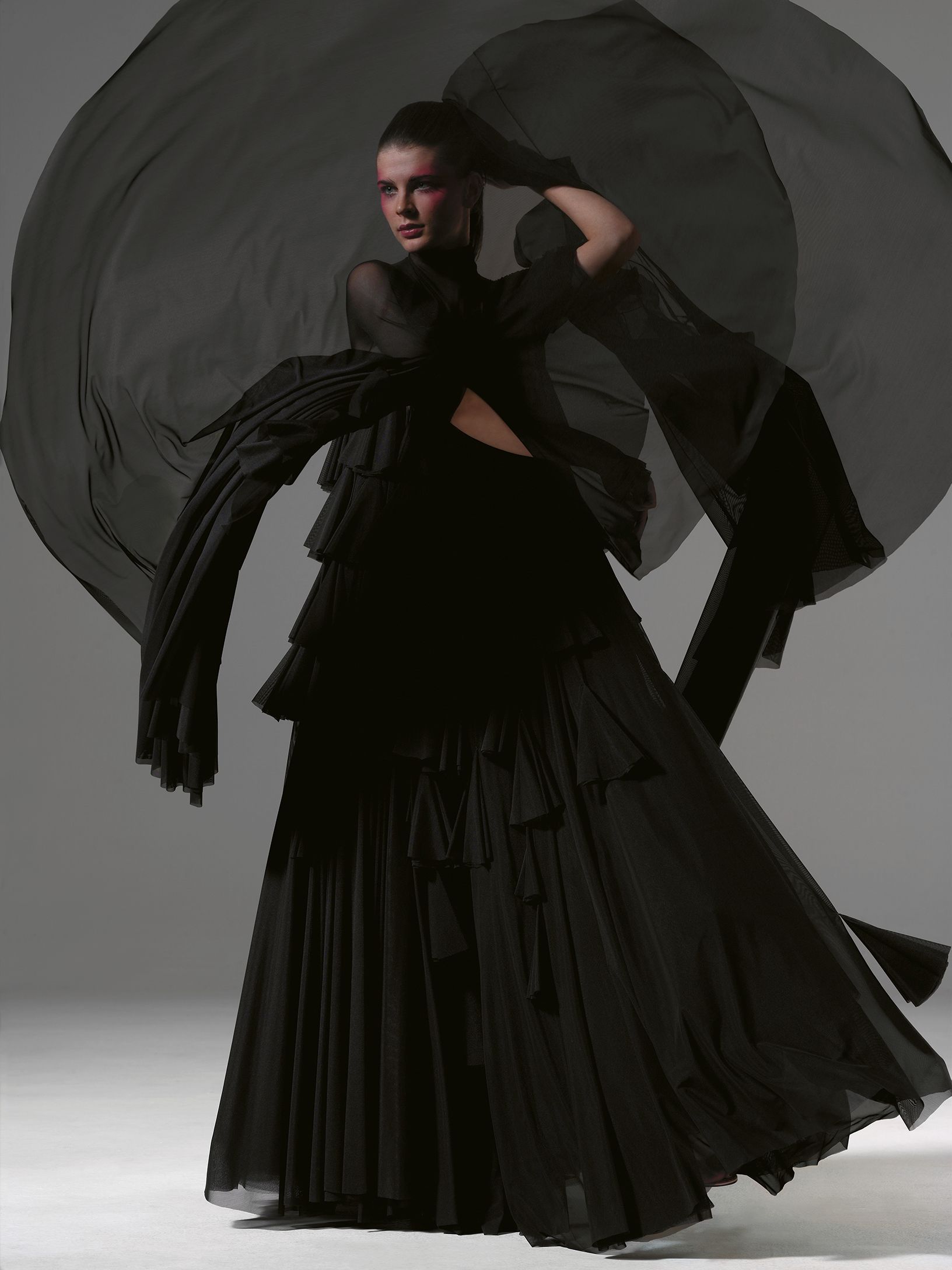
Both garments are characterized by an abundance of almost unmanageable materials, which posed a significant technical challenge for the designers. The pink poncho-like coat, or, as the designers called it, the Medusa, with a circumference of almost 38 meters and a bottom of ten circular pieces, took a week to hem.14 András Tóth recalled the creation of one of the evening dresses: “two of us were holding it while one of us was pushing it under the microlock [hemming machine].” All this was done to prevent the fabric from tearing. The garment’s weight increased proportionally as the ruffled circular rings grew wider and wider—the circumference of the rings gradually increased from 1.38 meters to 4.25 meters.
The designers reinterpreted 20th-century silhouettes in the short styles, with an emphasis on exciting tailoring solutions, where the circular shape emerged in a “much more coded way,” added Attila Godena-Juhász. A pocket was hidden in each sleeve folds of the orange cape, while an annular formed the ruffle. In contrast, the light blue and yellow boleros were created from a single cylinder, and the latter’s baggy sleeves recall the style of a 1950s Balenciaga cape.15 When the red, brown and pink coats are laid out, a circular tailoring pattern becomes visible. The red cape could be interpreted as a contemporary equivalent of a Trigère coat16, while the overlap of the pink coat is a solution that Balenciaga has also used before.17 Due to the folding of the fabric, the designers likened the brown jacket to a “towel slapped around the neck”. The last, nearly 440 centimeters wide red-sleeved scarf is reminiscent of a similarly oversized 1950s Balenciaga scarf.18
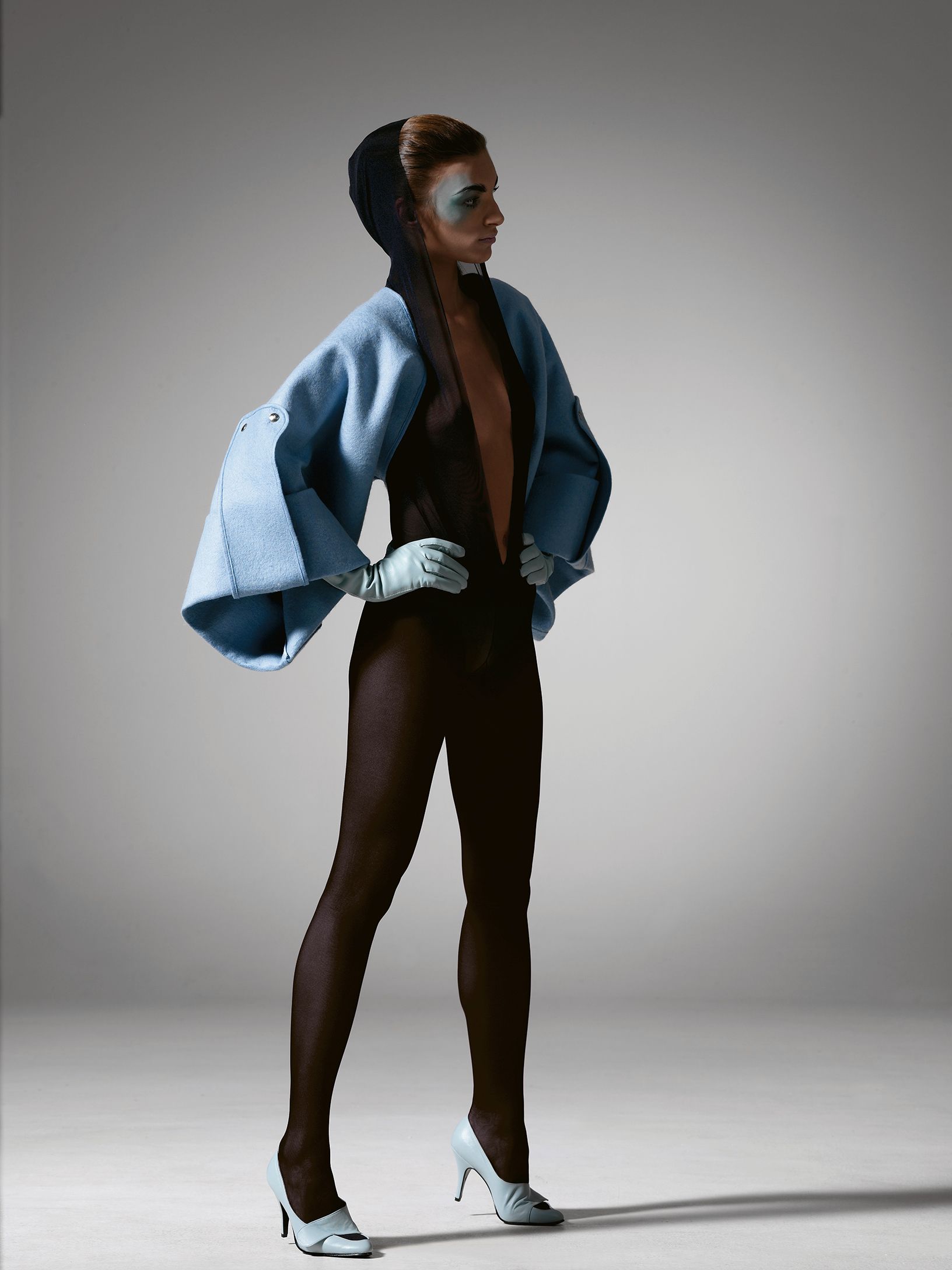
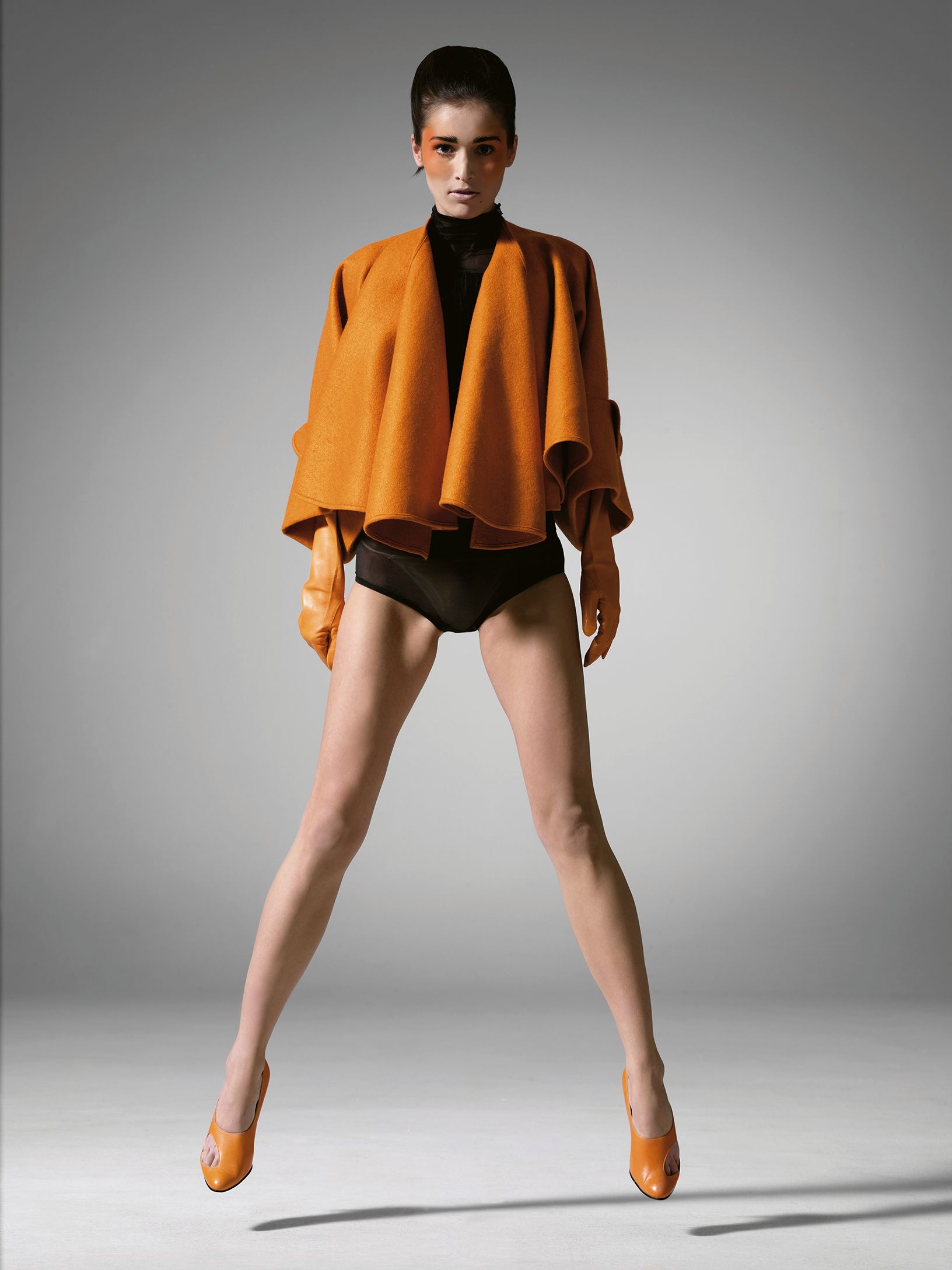
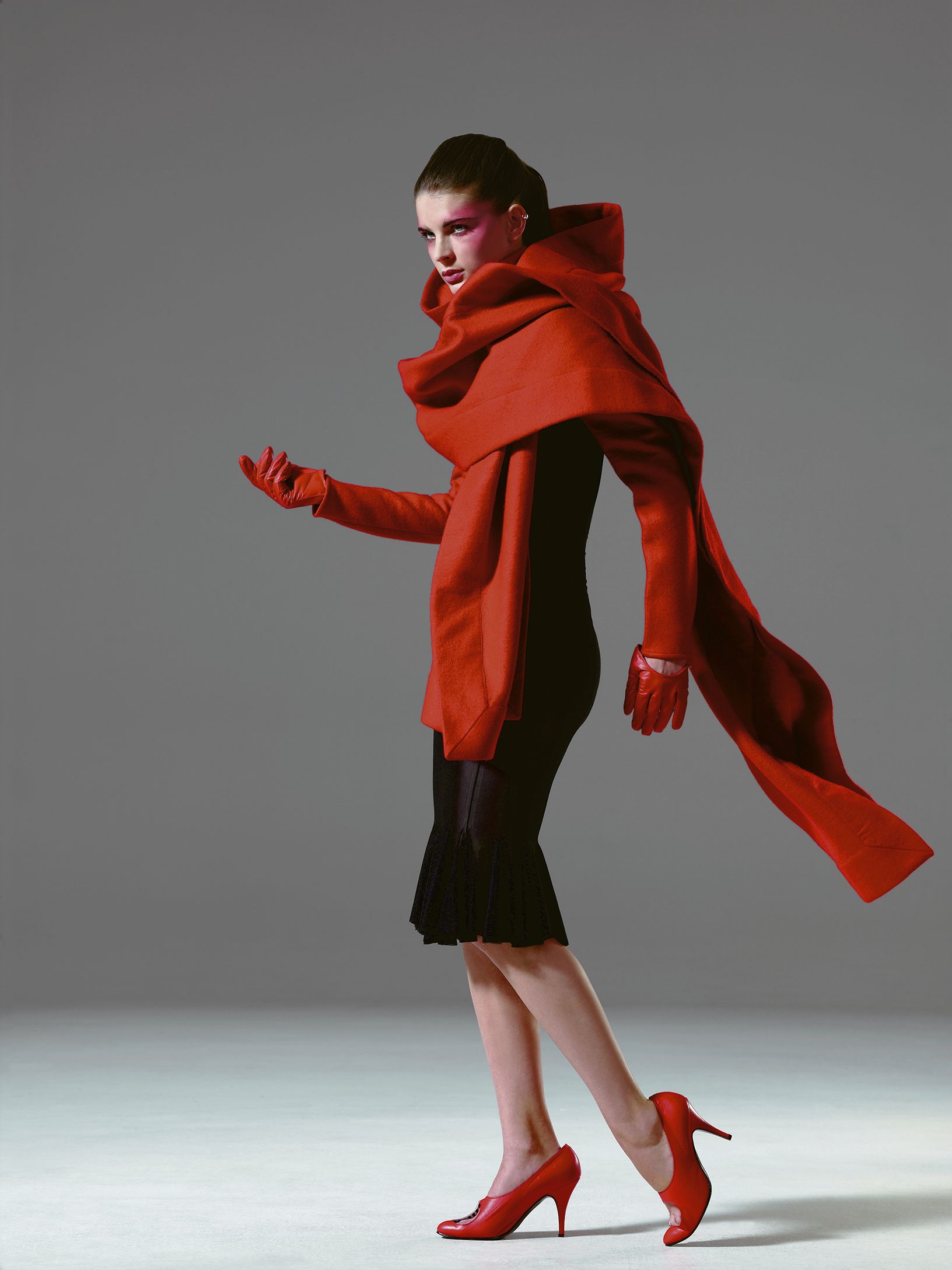
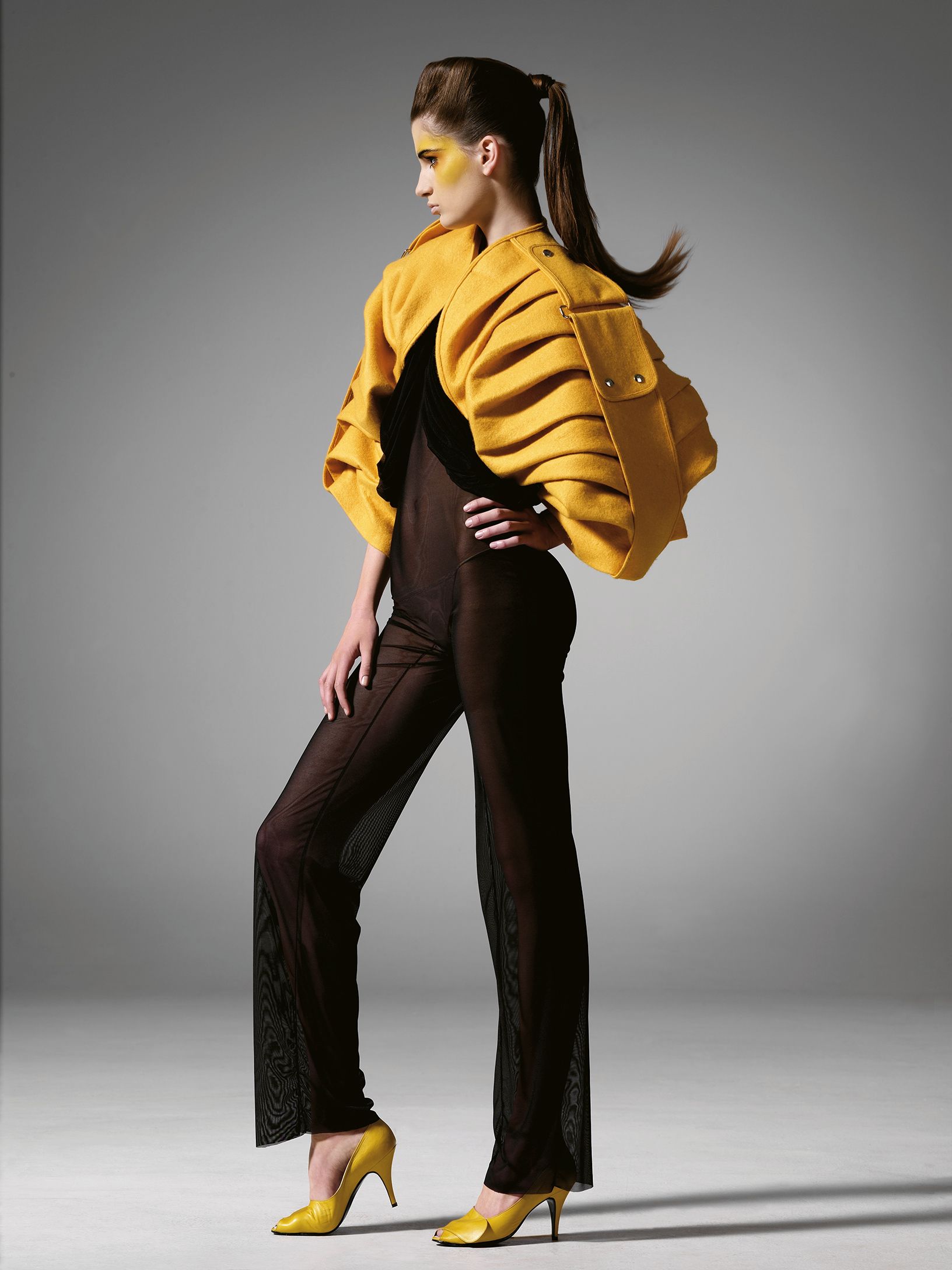

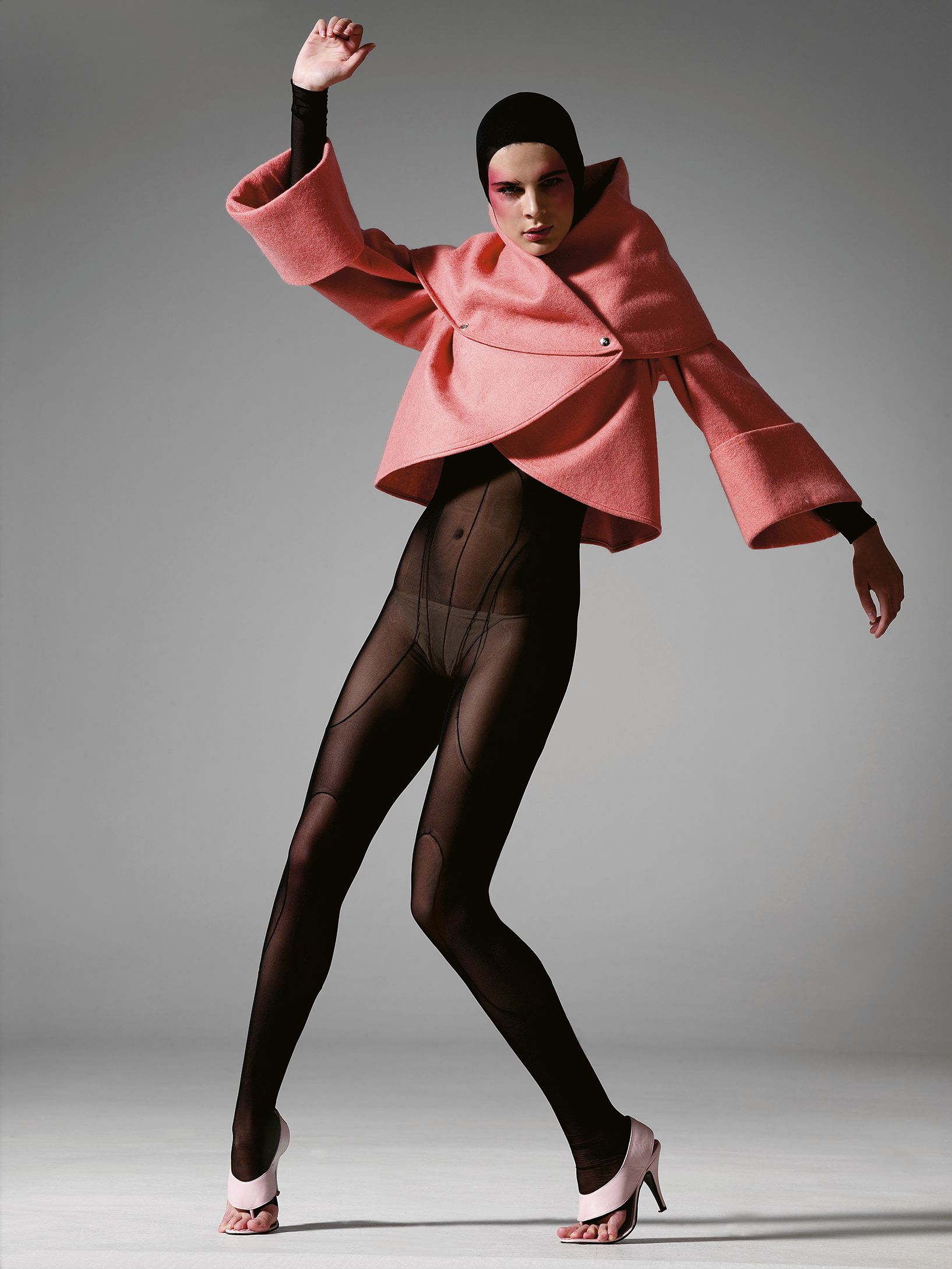
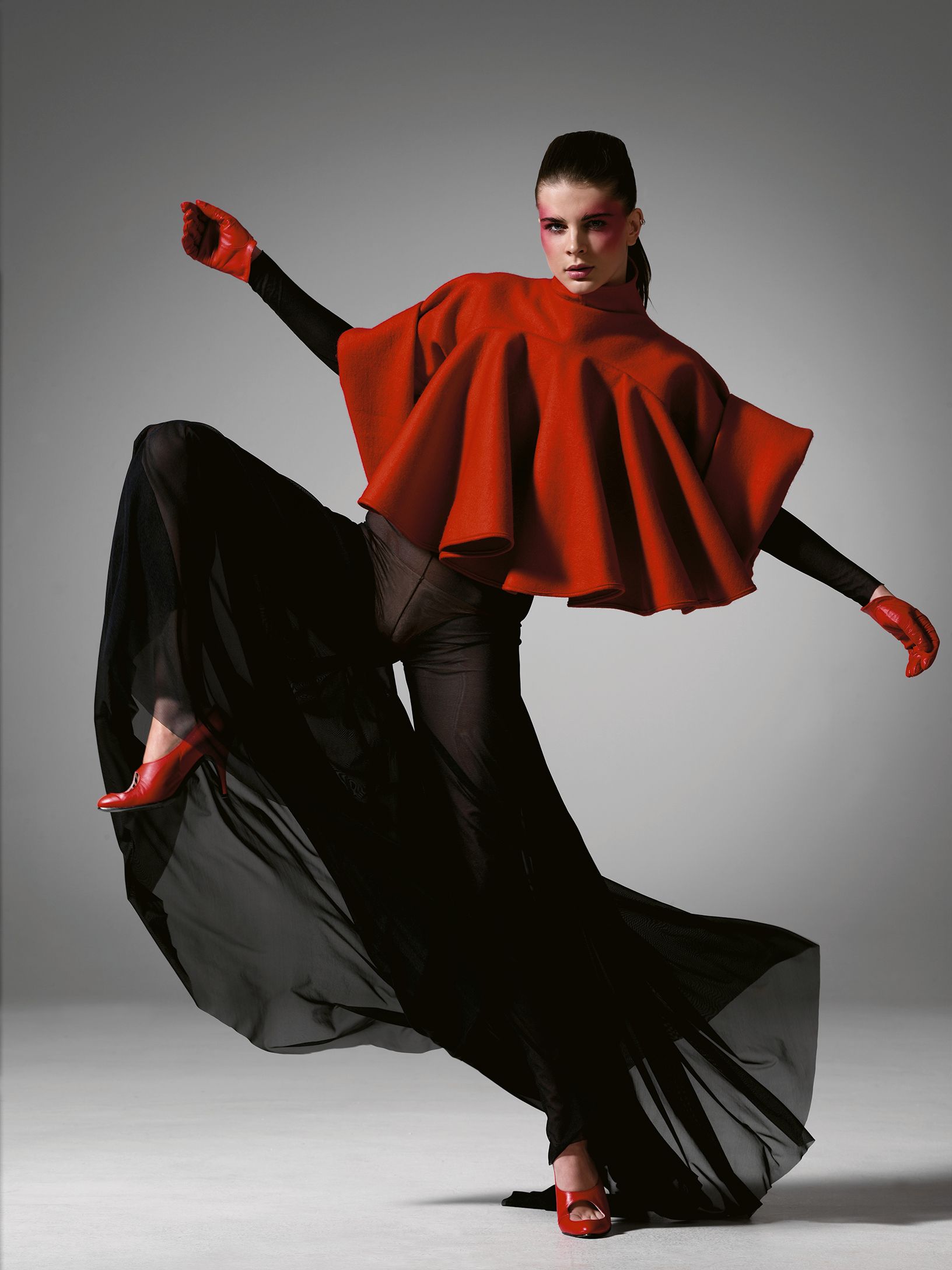
The designers sourced the tulle-like material from Italy and the wool from Hungary’s only felt factory, the Kőszeg Felt Factory (now Multifelt Factory), founded in 1896.19
The USE unused diploma work was a unique phenomenon in the education system of the time, as the trio broke with the industrial design approach and instead acted as fashion designers, which was not typical of the University of Applied Arts at the time.
The designers of the USE unused embarked on successful careers after graduation, but were met with a lack of understanding and were considered the odd man out at their former alma mater. Their academic years could be seen as a symptom that pointed out that the University of Applied Arts at the time gave priority to artistic education and did not support a business-oriented approach at all. The Department of Contemporary Design of the Museum of Applied Arts also felt it was important to include the collection on offer because it captures a brief moment in the history of Hungarian fashion design that could provide many lessons for future research. The next task is to produce special packaging for the collection, which will help to preserve it for the future.

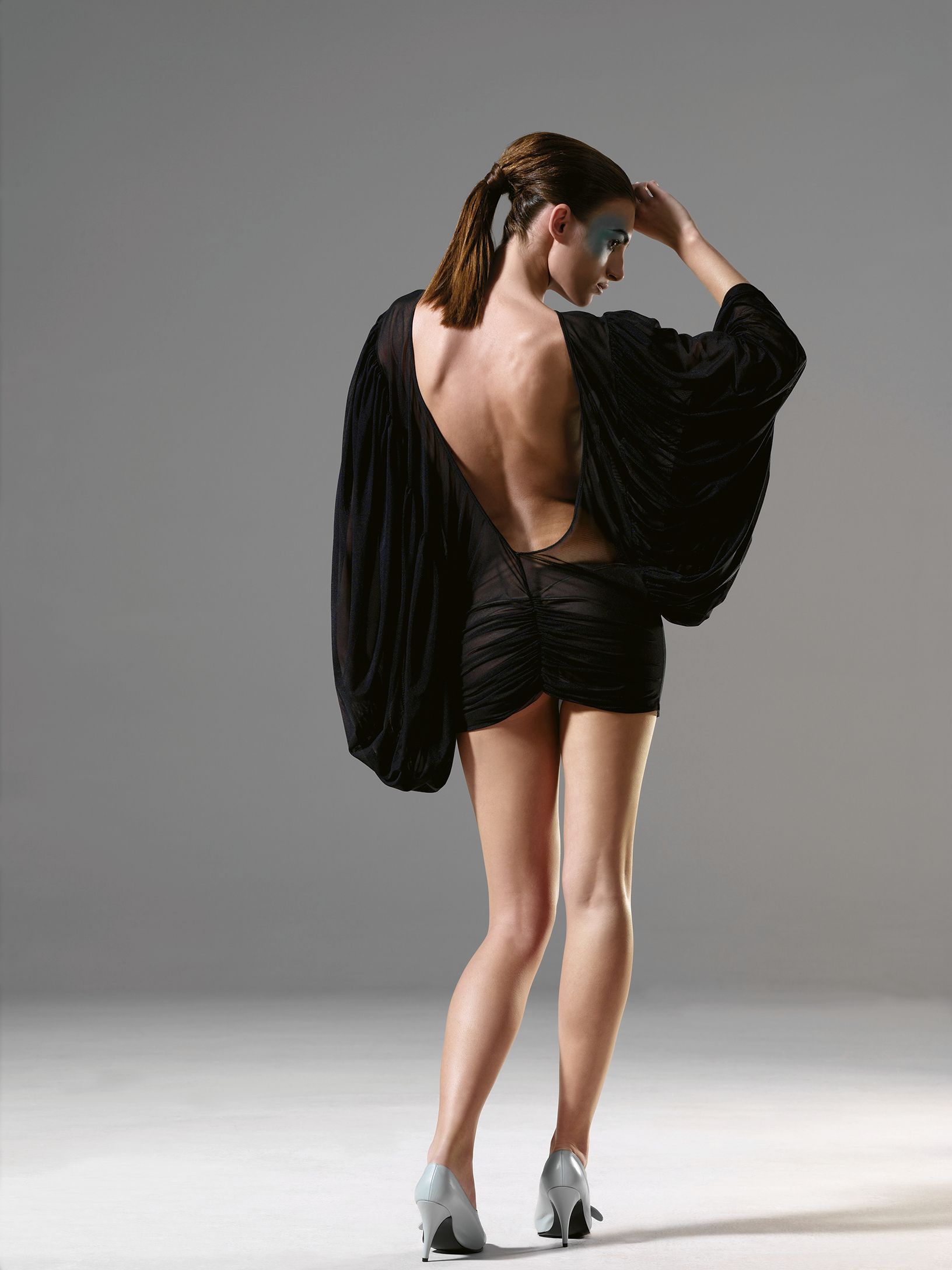


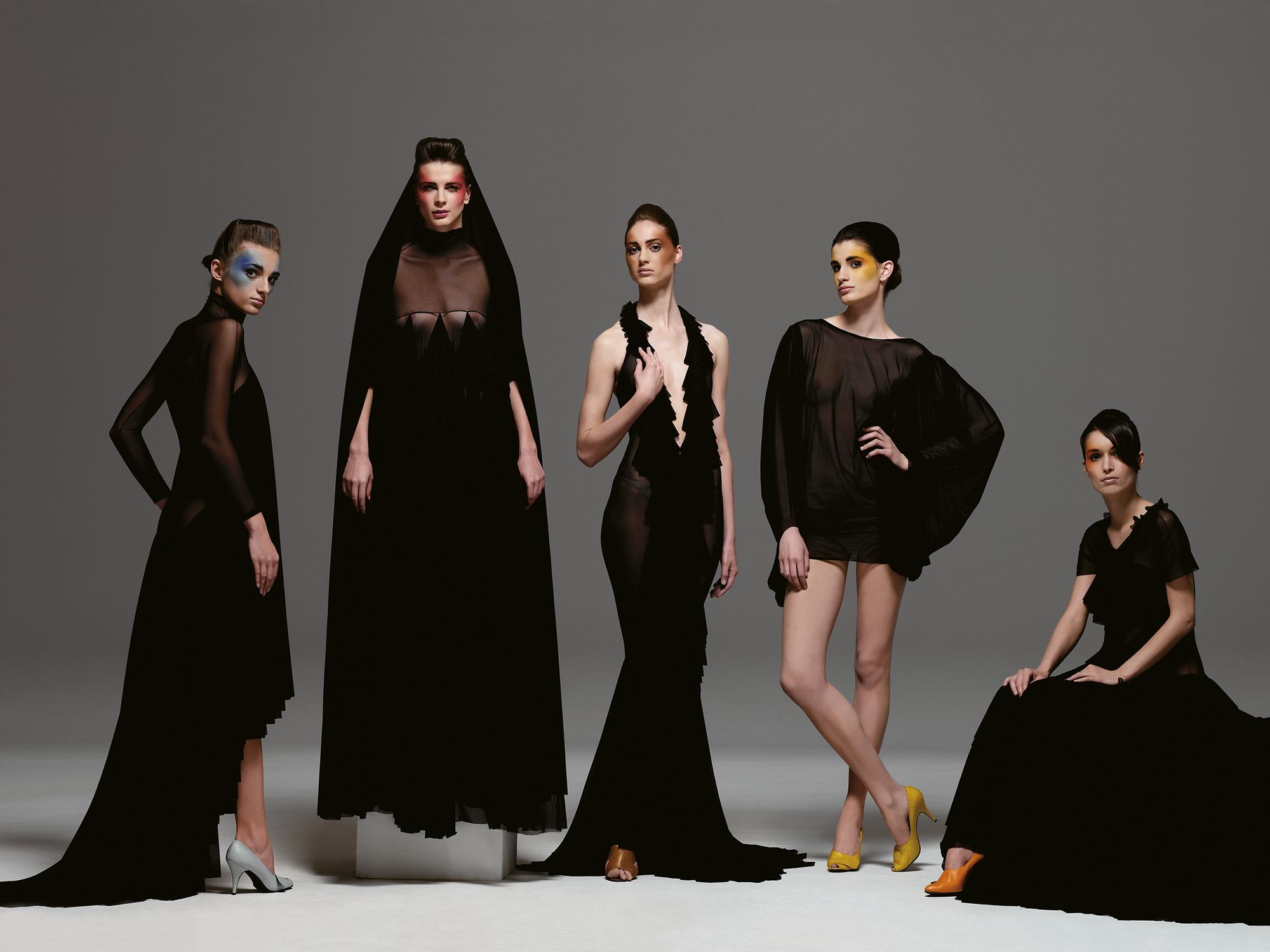
Photos: Márton Perlaki
[1] The USE unused diploma collection was added to the collection of the Museum of Applied Arts under inventory numbers 2019.110-124.
[2] András Tóth and Attila Godena-Juhász were interviewed by Dr. Judit Horváth and Rita Komporday on 21 November 2019. A written and live interview with Eszter Füzes was conducted by Rita Komporday on 21 February 2022. I would also like to thank the designers for their help and support and the materials provided.
[3] The condition survey was carried out by Anikó Perger and Anikó Moór, restorers of the Textile and Costume Collection, under the supervision of Zsuzsanna Sziráki, a former intern of the Contemporary Design Department.
[4] The six-piece collection was created in a knitting course during the “wandering” semester, when each student had the opportunity to take courses in a different specialization from their major. The photos of the collection were taken by Márton Perlaki in the attic of Eszter Füzes’ apartment, and a ballet dancer was hired as a model.
[5] Kultura.hu: Első díj az Első Európai Divat Parádén. (First prize at the Cumulus Fashion Tour.) 18 July 2003. https://kultura.hu/kepzo-elso-dij-elso-europai/ (Accessed 18 May 2021).
[6] Website of Attila Godena-Juhász and András Tóth. About. http://www.aplusa.design/about.html (Accessed 19 February 2022)
[7] Hering András: Vége egy hazai sikersztorinak, megszűnik a USE unused divatmárka. (The end of a Hungarian success story, the USE unused fashion brand goes out of business) Phenom’enon. 2017. https://phenomenon.hu/vege-egy-hazai-sikersztorinak-megszunik-a-use-unused-divatmarka/ (Accessed 23 February 2022).
[8] Accessories included stiletto leather shoes, leather gloves and tulle jumpsuits, displaying the playfulness and experimental attitude that is characteristic of the costumes. The jumpsuits were designed to match the short coats and were “all based on different concepts.” In the case of the gloves, the shank gradually disappears, while the high-heeled shoes hide or show off different parts of the foot. Anna Bujiné Holup, a shoe designer whose workshop was located at 8 Visegrádi Street, was responsible for the production of the shoes. Anna Holup has decades of experience in shoe design. She started her professional career at the Hungarian Fashion Institute, then worked at the Tisza Shoe Factory in Martfű, and later became a designer at the Leather Design Department of the OKISZ Laboratory. He also worked as a lecturer at the Department of Textiles at MOME between 2007 and 2013. Phone interview with Anna Bujiné Holup (26 August 2021) Made in MOME 2007-2013 https://mome.hu/hu/kiadvanyok (Accessed 7 September 2021)
[9] sheath dress: “The garment gets its name from its fit, as it forms a form-fitting sheath or coating around the body. (…) The garment, usually sleeveless, combined with a tight A-line or straight-leg skirt, was worn as a casual or everyday garment… In the 1950s, curved side seams were added to the sheath dress, but it was still not worn with a belt or sash, nor was the waistline marked by stitching.” Marnie Fogg. Sheath dress. The Dress. 100 ideas that changed fashion forever. 2015. Budapest, Corvina Kiadó. p.124.
[10] Marnie Fogg. Sheath dress. The Dress. 100 ideas that changed fashion forever. 2015. Budapest, Corvina Kiadó. p.124.
[11] Marnie Fogg: The trapezoidal line. The Dress. 100 Ideas that Changed Fashion Forever. 2015. Corvina Publishing p.185.
[12] The Olympic Museum: Fashion from 1968 – André Courrèges. https://artsandculture.google.com/asset/fashion-from-1968-andr%C3%A9-courr%C3%A8ges-fashion-show-andr%C3%A9-courr%C3%A8ges/cwHB4UQKeOILQQ?hl=en (Accessed 20 February 2022)
[13] Balenciaga: Estélyi ruha.1961. https://www.kci.or.jp/en/archives/digital_archives/1960s/KCI_226 (Accessed 4 January 2022)
[14] The skirt of the pink coat has a circumference of 39.97 cm, the skirt of the yellow coat has a circumference of 30.64 meters, while the skirt of the brown coat with the high neck has a circumference of 41.1 meters.
[15] Balenciaga: Coat. 1950. https://fashionmuseum.fitnyc.edu/objects/81381/728123?ctx=6e2b4a1f-7f99-46c0-98c9-6adb63b43917&idx=6 (Accessed 4 January 2022)
[16] Vogue: New Shorts-the short coat, the short coiffure.1 February 1949, p.184-185. https://archive.vogue.com/article/1949/2/news-shorts (Accessed 5 January 2022)
[17] Vogue: Paris Collections. Balenciaga’s New Volume. 1 September 1950, p.122-123. https://archive.vogue.com/article/1950/9/the-paris-collections-balenciagas-new-volume (Accessed 22 February 2022)
[18] Vogue: Balenciaga’s great scarf like a wrap. 1 October 1950, p.154. https://archive.vogue.com/article/1950/10/paris-the-big-scarf (Accessed 22 February 2022)
[19] Nyugat.hu. Így néz ki ma Magyarország első és egyben utolsó működő nemezgyárának épülete Kőszegen. (This is how the building of Hungary’s first and also its last working felt factory looks today in Kőszeg) 2020 https://www.nyugat.hu/cikk/igy_nez_ki_ma_magyarorszag_elso_es_egyben_utolso_nemezgyara (Accessed: 9 June 2021)
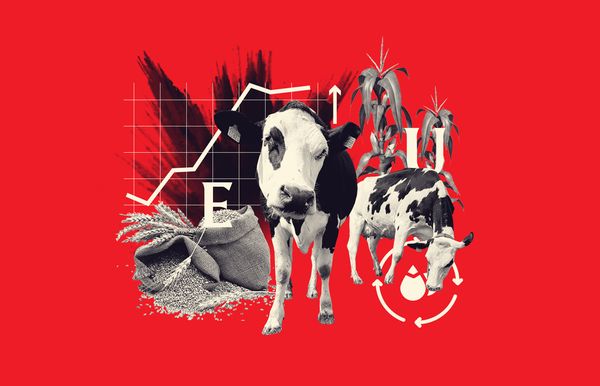
European consumers will face higher prices | Agricultural expert about the effects of Russian-Ukrainian war
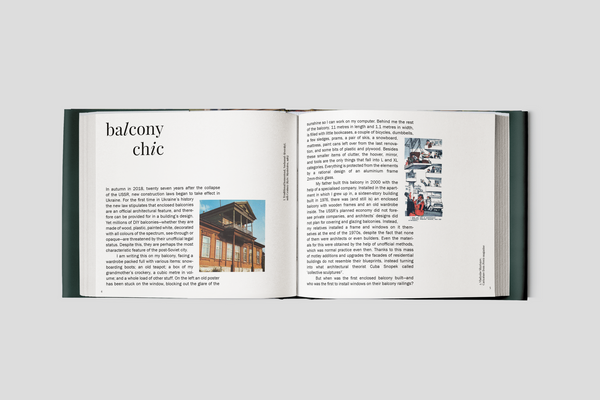
A good deed now, a good book later










